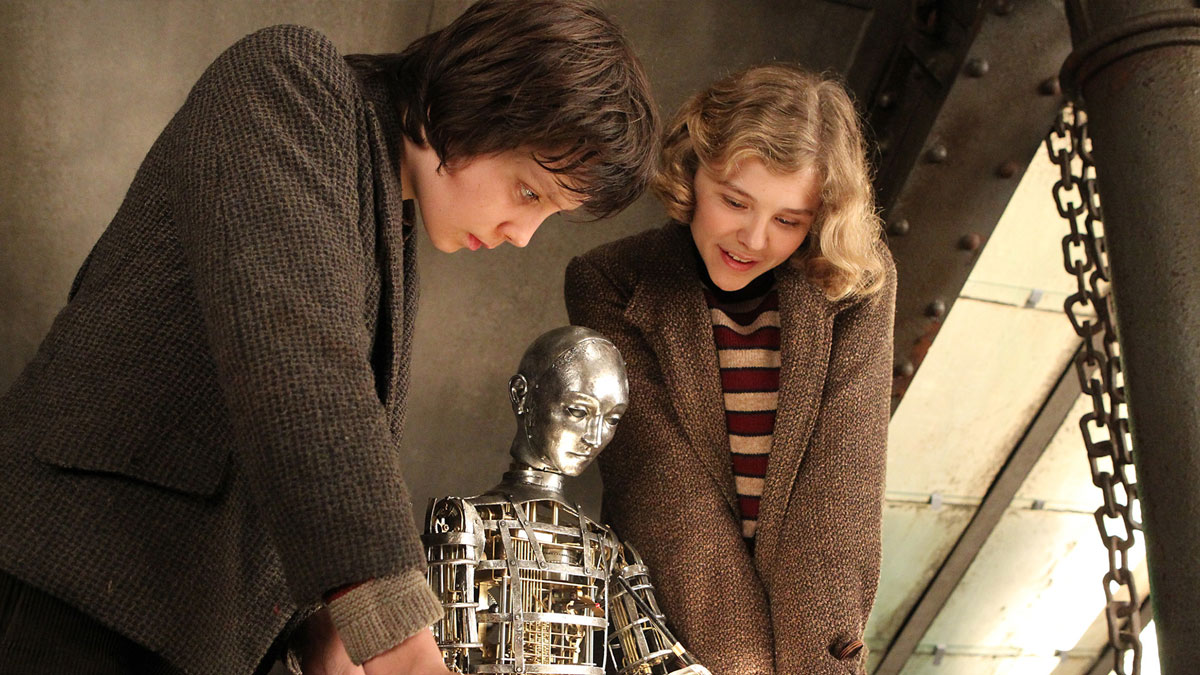
(C) 2011 Paramount Pictures. All Rights Reserved.TM, (R) & Copyright (C) 2013 by Paramount Pictures. All Rights Reserved.
"Hugo" The Mystery of the Automaton and the Happy Finale
2018.12.05
Automaton photography
Scorsese was adamant that the automatons in the film be real, functioning ones, rather than CG. To that end, Dick George Creatives , a prop production company in East Molesey, England, created 15 full-body models , each in different stages of restoration and for different purposes. Many heads were also made with slightly different facial expressions, and the two that best suited the director's image appeared on screen.
In the film, this automaton draws a picture of " A Trip to the Moon "(*8). However, if a mechanism for drawing such a complex picture were to actually be developed, it would be impossible to complete it in time for filming. So prop maker Michael Parkin came up with a trick similar to Kempelen's Turk. He entered the coordinates of the picture into a computer and moved a magnet under a table using a mechanism similar to an old XY plotter . The magnet then attracted the arm of the automaton, which then moved across the paper.

"Hugo" (C) 2011 Paramount Pictures. All Rights Reserved.TM, (R) & Copyright (C) 2013 by Paramount Pictures. All Rights Reserved.
CGI was also used in the scene where the automaton falls onto the train tracks in slow motion: Pixomondo laser-scanned a lightweight automaton built for the action scenes to create a digital replica, and the company also used this data to create a nightmare sequence in which Hugo's body transforms into the automaton.
*8 Various films by Méliès Concept ArtHe had hidden the paintings behind a secret door in the closet. However, when Isabelle discovered them, Méliès became enraged and scattered them all over the room. This scene was a computer-generated version of an actual drawing by Méliès, created by Pixomondo. When he was young, Méliès Gustave MoreauHe had studied painting privately from his parents and had professional-level artistic skills, and it seems likely that Méliès was the first to draw concept art before the actual production of a film began.

